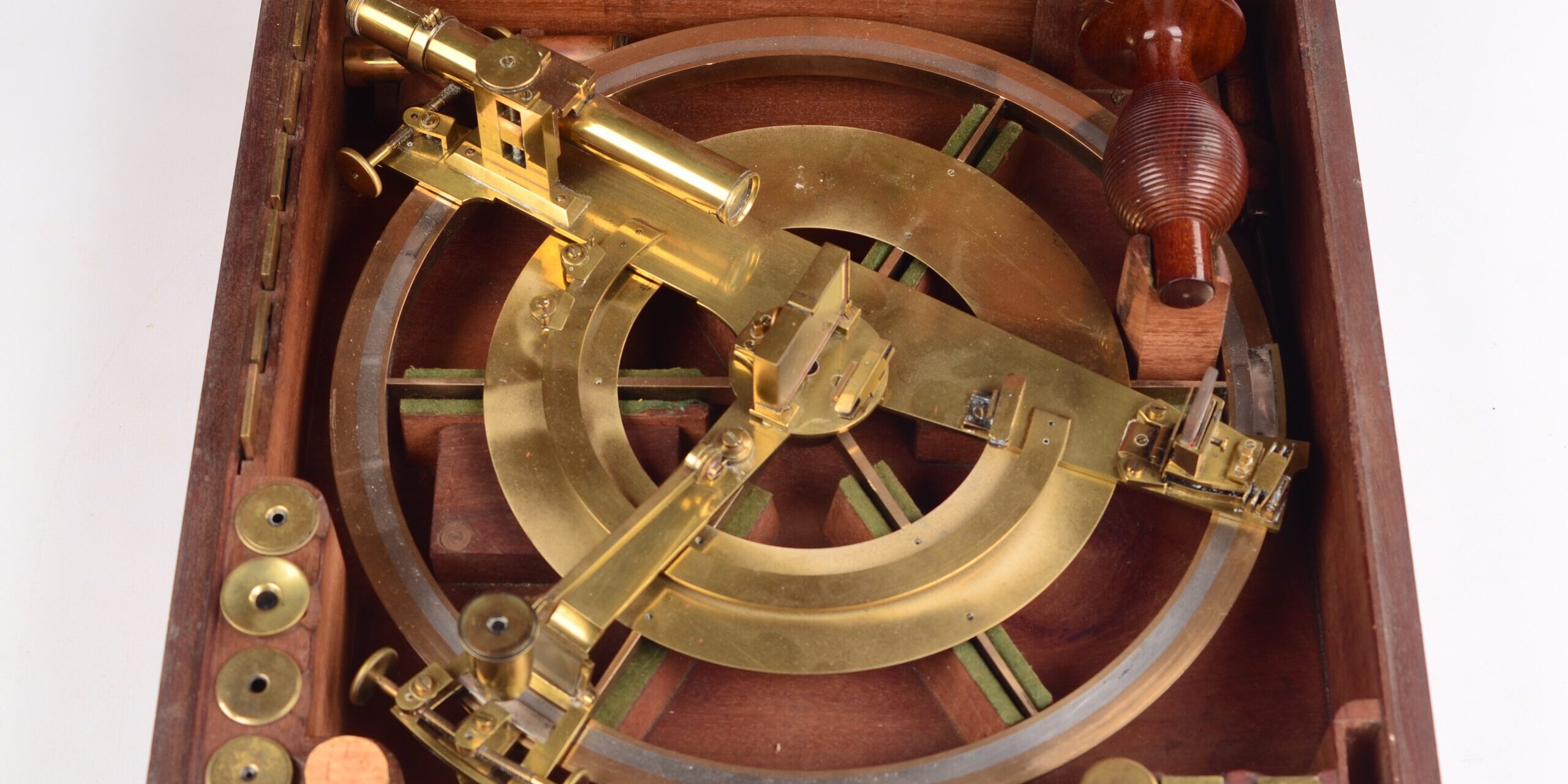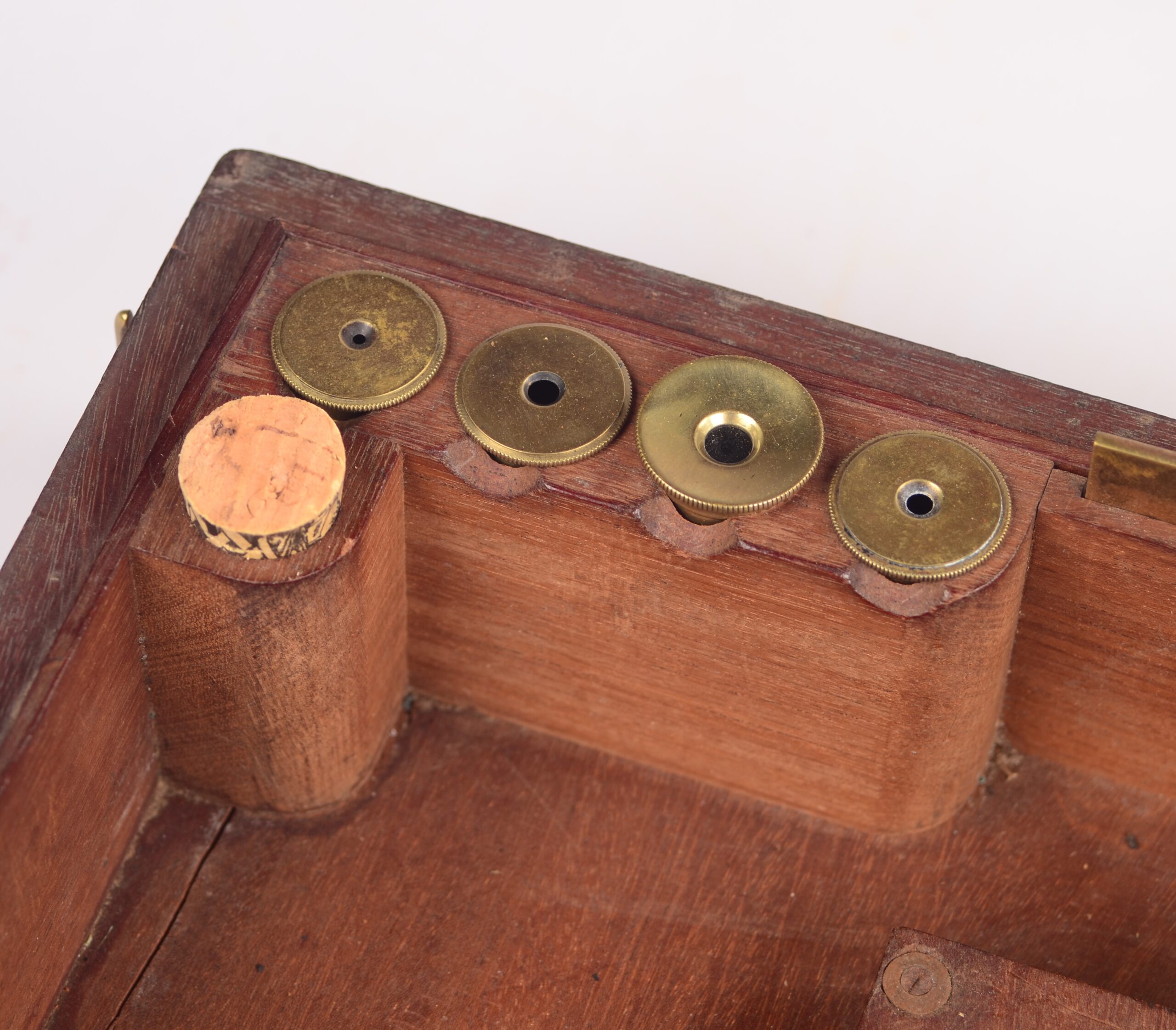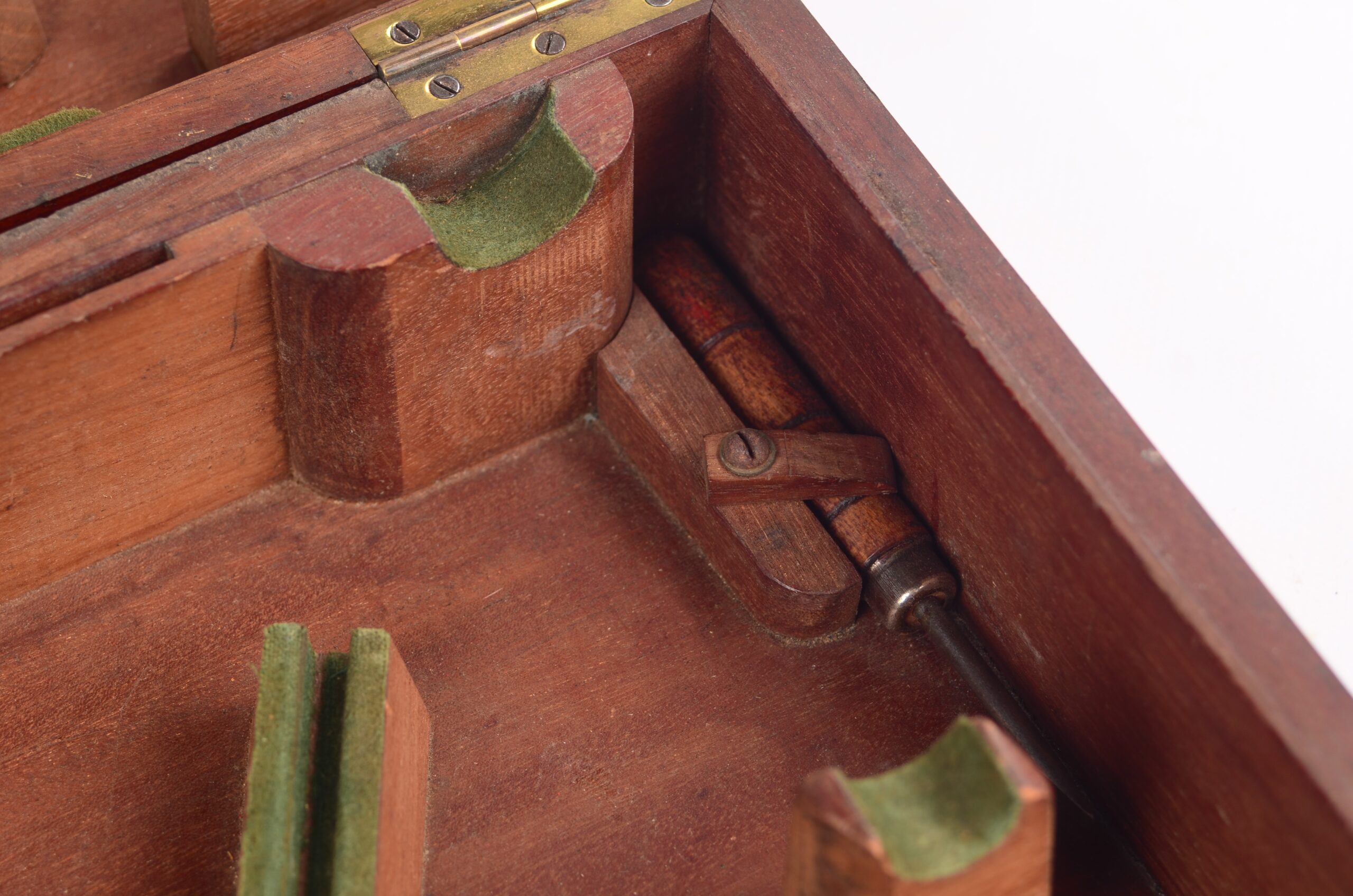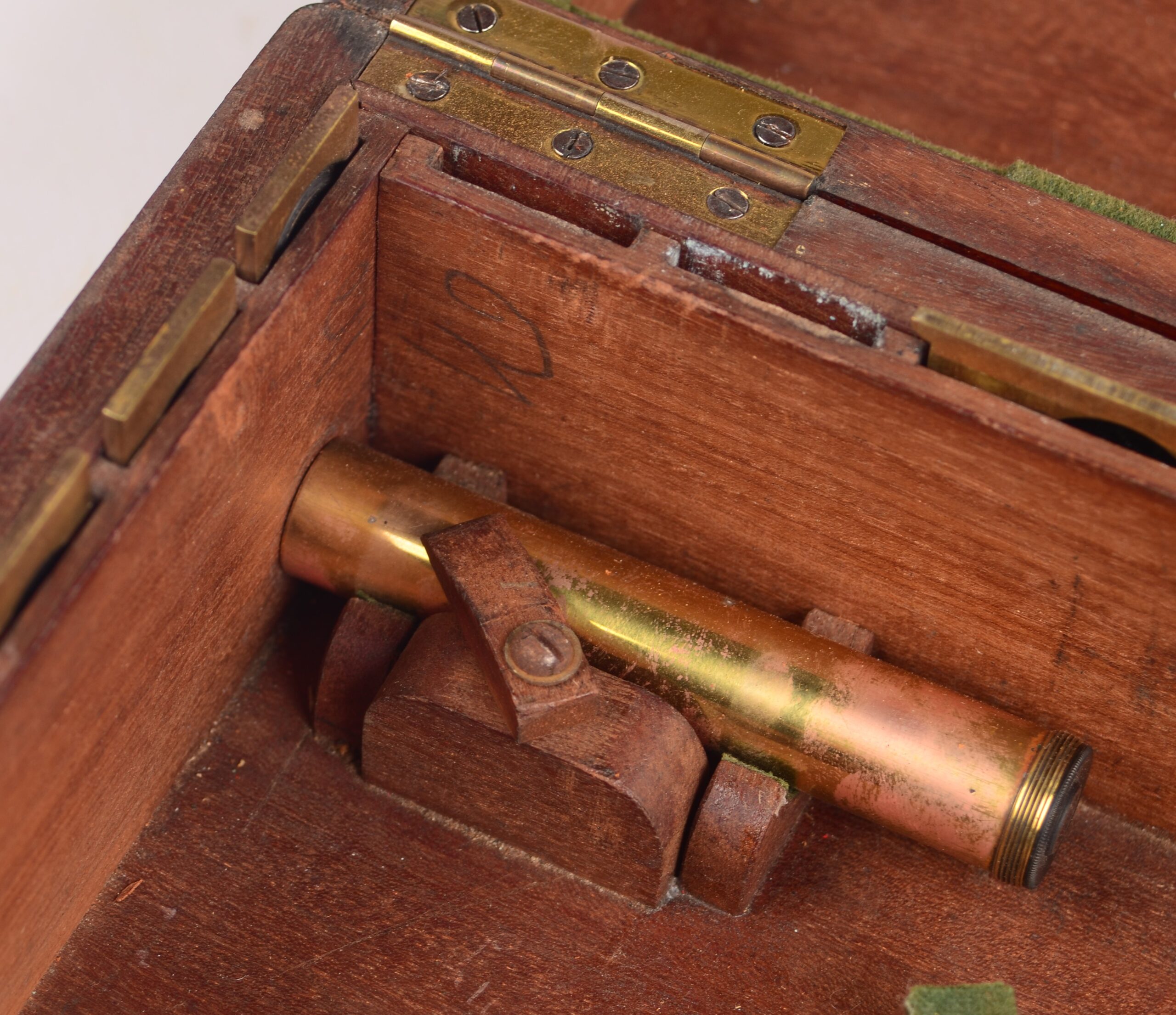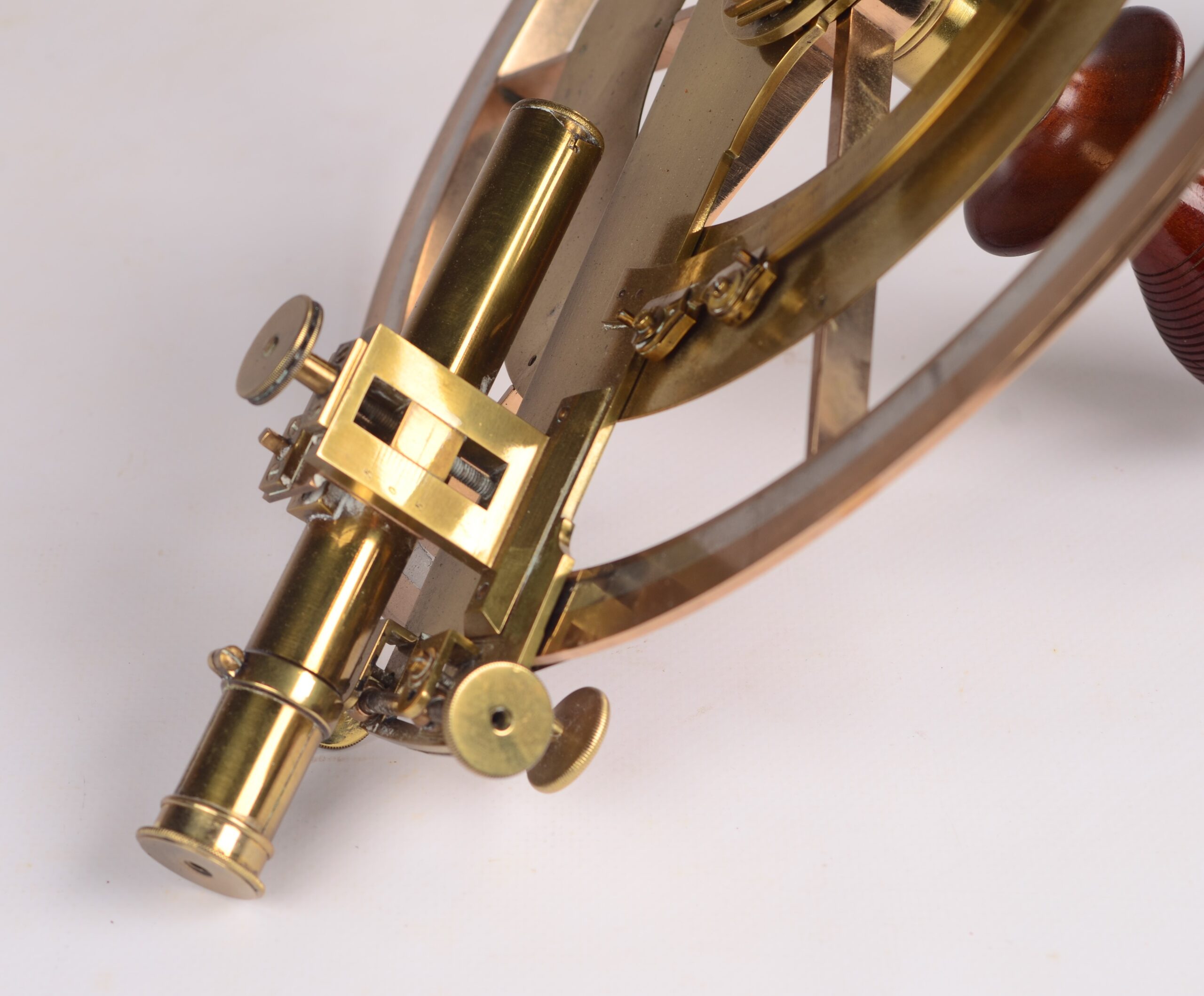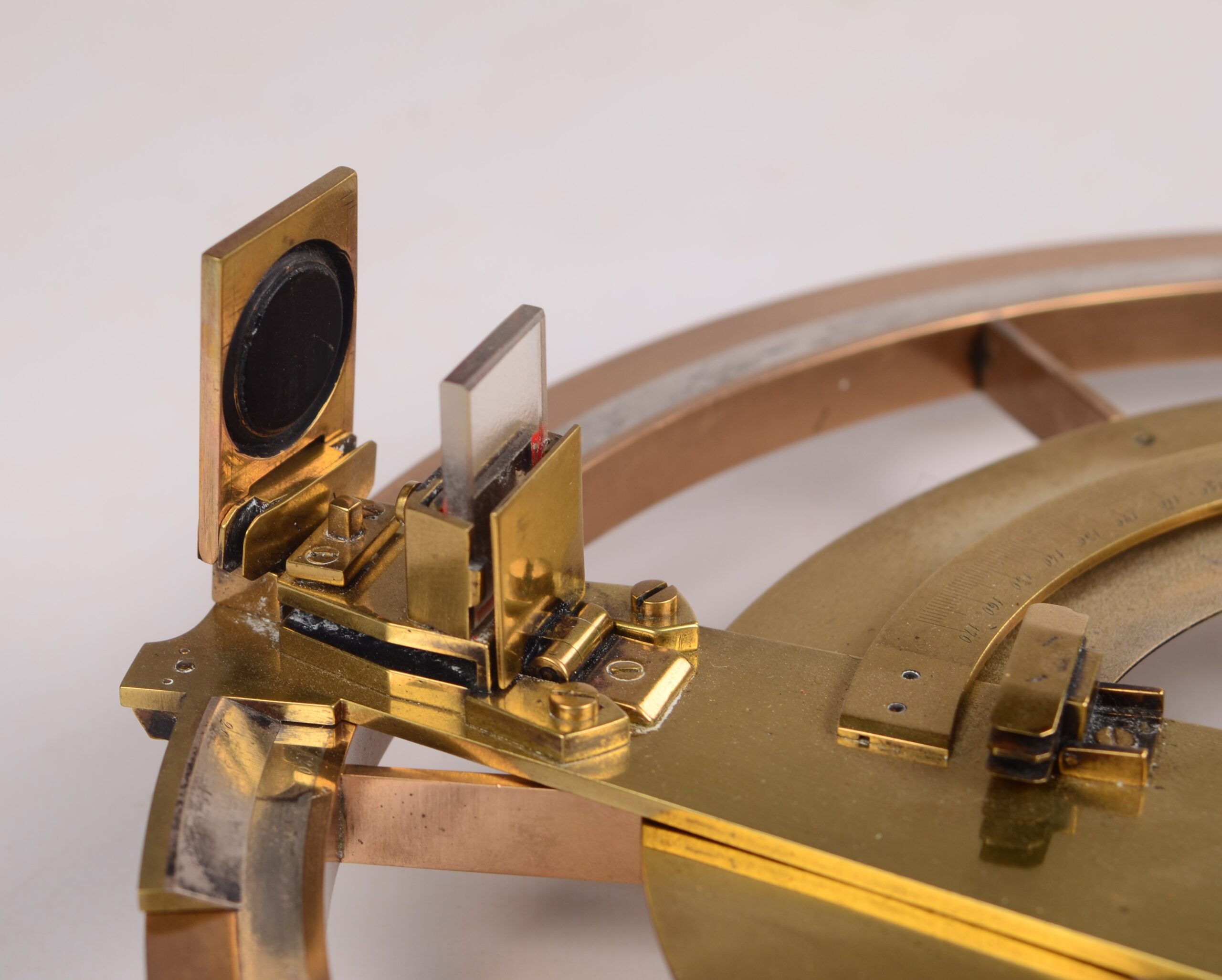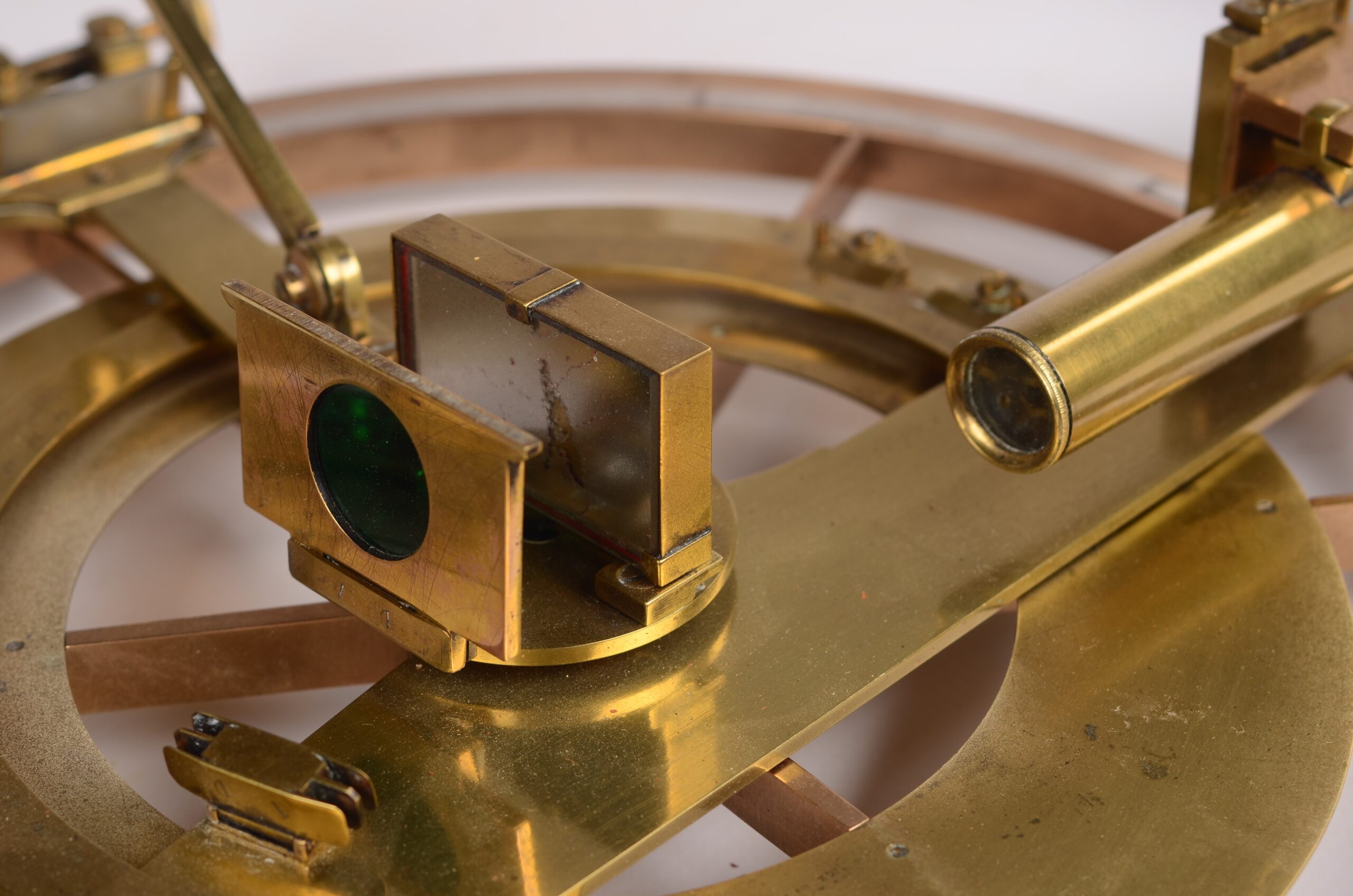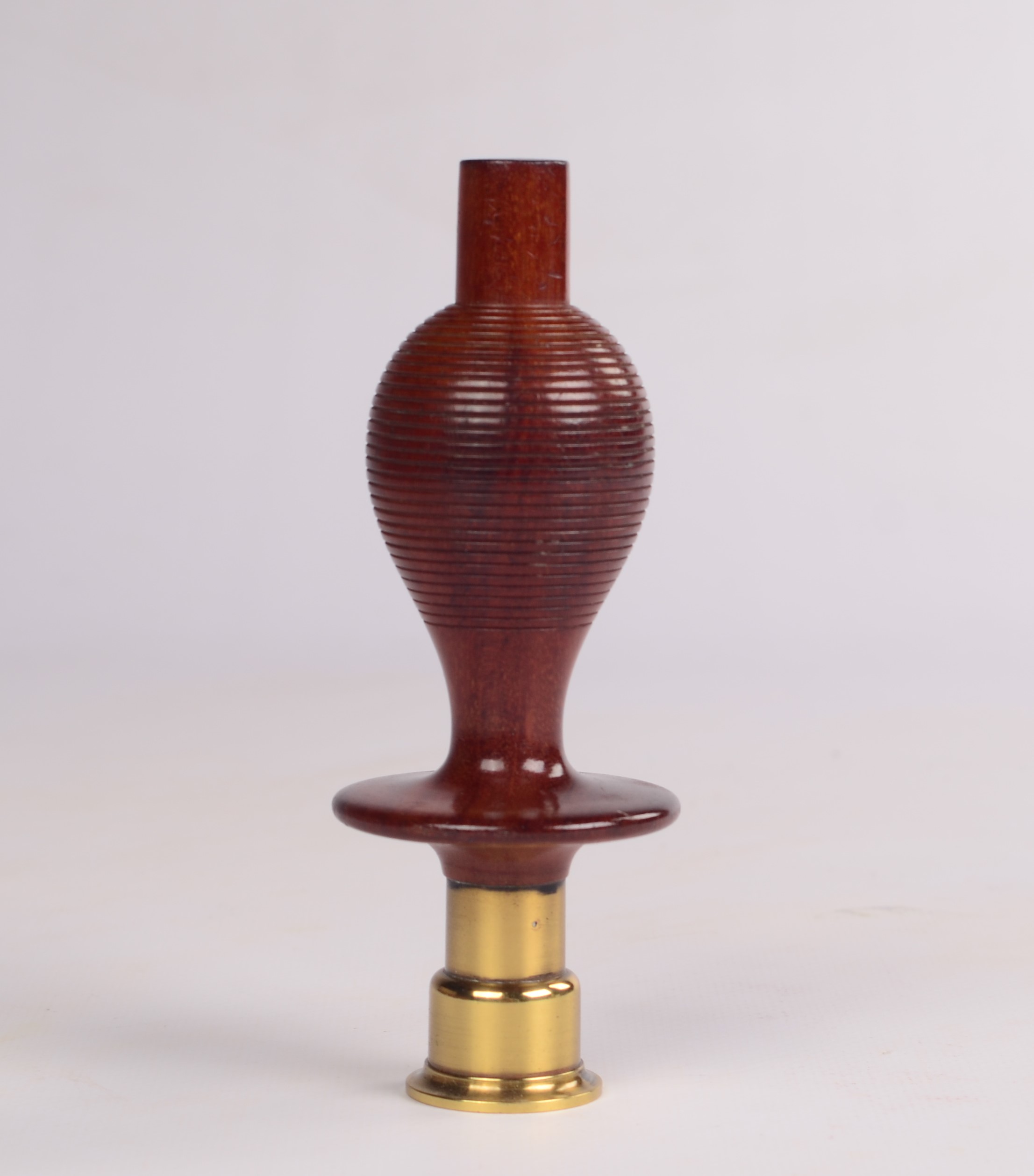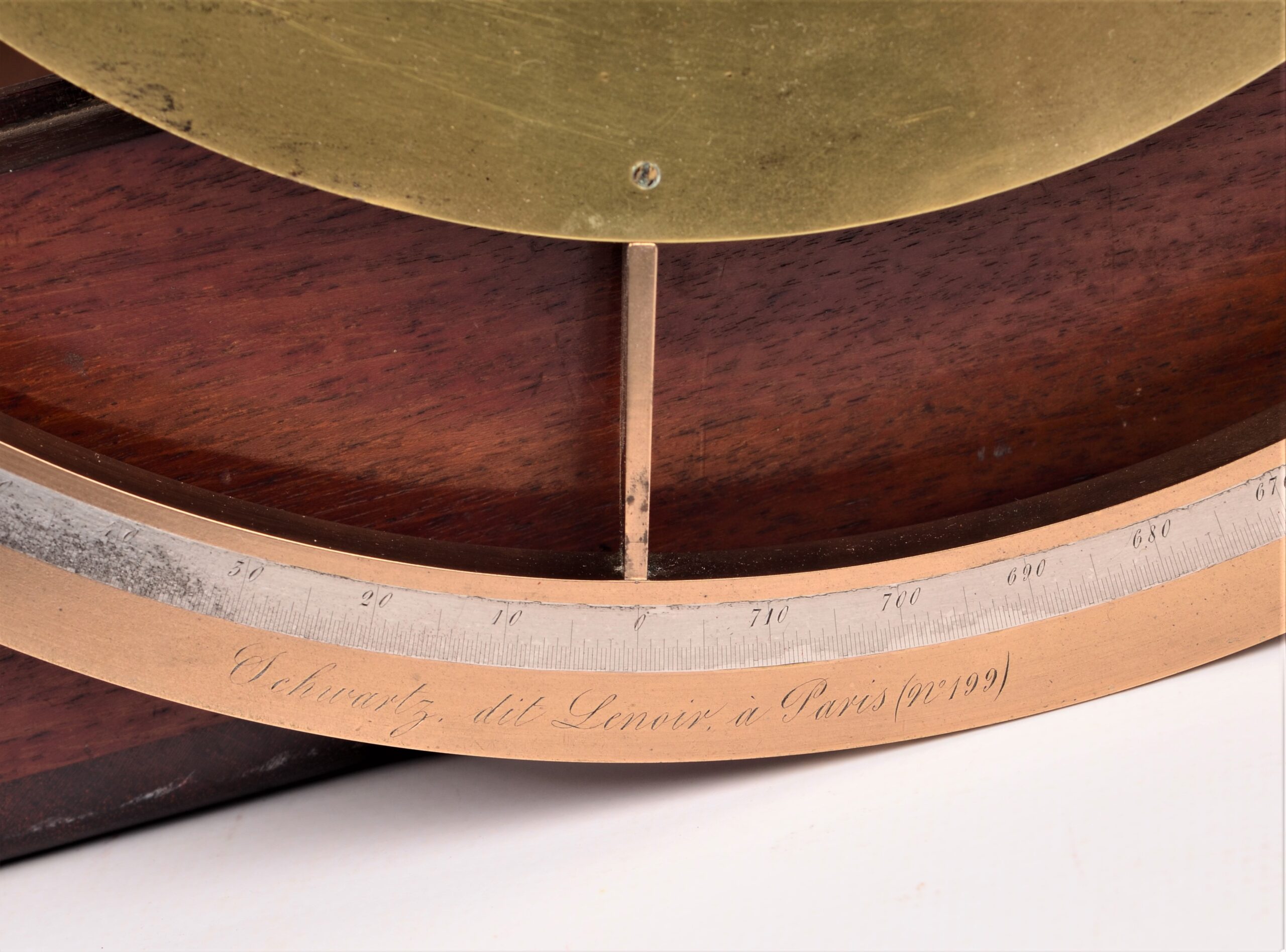Reflecting or Borda circle – Schwartz, Lenoir, Paris, ca. 1840 “Description et usage du cercle de réflexion”, by Ch. de Borda, Paris, 1810
Circle sextant, Borda circle, reflecting circle, circumferator, repeating circle, this instrument is known among several names. In Paris Chevalier de Borda published a description of his instrument in 1787. The enclosed 3rd edition with drawings of the Borda publication is from 1810.
The reflecting circle measures angles greater than 180 degrees. At sea, it is used in determining lunar distances. This well preserved intrument is made by Schwartz, Lenoir’s successor. Etienne Lenoir (1744 – 1832) who had his workshop also in Paris. In his time Lenoir was considered as the best sesigner of nautical and observation instruments.
The reflecting circle consists of a brass frame with scale and detached wooden handle in a square fitted mahogany box. In the box there are many side pockets with filters, eyepieces, a key and so on. A few parts are missing. The instrument is signed, Schwartz dit Lenoir à Paris (No 199). The Borda description is complete and in a very good condition.
Ceschi’s 1843 Inventory describes no. 23 of Lenoir , as follows:
Borda reflecting circle, made by Lenoir, one foot in diameter. This circle is graduated in 720 parts, each of which is subdivided in three. The two verniers, which are located, one at the end of the alidade carrying the telescope and small mirror, the other at the end of the alidade of the large mirror, give the twentieth part of the last subdivision of the Circle. This instrument is equipped with:
- An ebony handle, decorated in metal, screwed into the back of the instrument.
- A small magnifying lens for reading the divisions.
- 4 differently colored glass shades with metal frames to place in front of the large mirror.
- 4 of the said to place between the two mirrors, or at the back of the small mirror.
- 5 different metal parts used for rectifying the instrument.
- A screwdriver with ebony handle.
- Another smaller metal one for moving the rectification screws of the two mirrors.
Catalogue: NM.6-45
Date: ca. 1840
HWL case: 10x32x32 cm
D circle: 27 cm
Signed: Schwartz dit Lenoir à Paris (No. 199)
Origin: France
Condition: wear consistent with age and use
